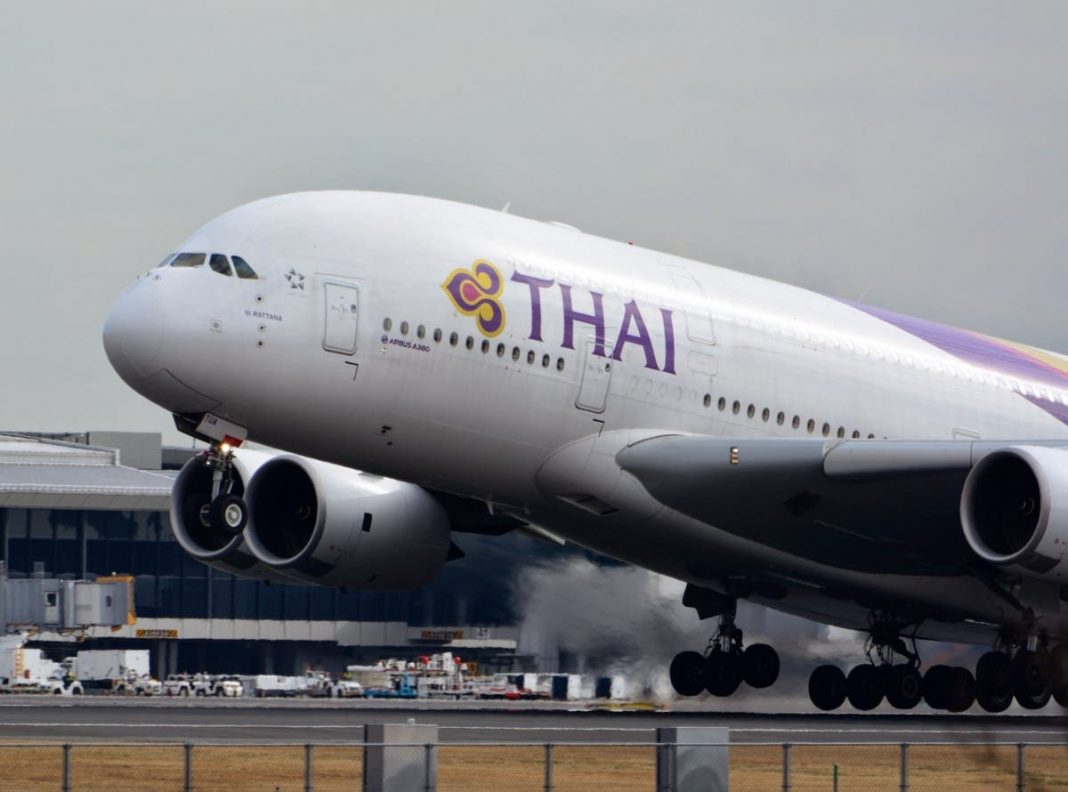With a small number of high profile airlines hogging the headlines, it’s easy to forget over a dozen airlines are operating the A380. Thai Airways is one A380 operator that frequently gets overlooked. The airline flies just six A380s. Given all the problems surrounding Thai Airways and flying in general, it’s a good time to look at what’s happening with the Thai Airways’ A380 fleet.

A small fleet in big trouble
Usually, Thai Airways sends its A380s to five flagship destinations; Frankfurt, London, Osaka, Paris, and Tokyo. But right now, no Thai Airways flights are operating. While the airline was in trouble before the travel downturn, COVID-19 brought flights to a fast halt.
All six Thai Airways A380 operated their last flights over three months ago. They’ve been parked at Bangkok’s Suvarnabhumi International Airport ever since. There is a lot of speculation swirling about the future of Thai Airways. However, retaining the state-owned national carrier is a government priority, and the chances of Thai Airways ceasing to exist is slight.
But whether the A380 ever again flies a scheduled flight for Thai Airways is a more open question. Thai Airways only has 75 planes. But the fleet comprises six types of aircraft. That’s a lot of complexity (and expensive) for a relatively small overall fleet.

Thai Government willing to downsize Thai Airways fleet
The Thai Government has already signaled a willingness to downsize the fleet. In May, Thai Transport Minister, Thaworn Sennia told Rueters;
“We have to reduce aircraft types to as much as possible to reduce cost. We can take out old aircraft, replace them with new ones through leasing or other procurement methods.”
In 2019, Thai Airways lost US$385 million. In 2018, the airline lost $370 million. This year, the numbers will be far worse, even catastrophic.
Even not flying, Thai’s A380s cost money
While you might think parking the A380s at Suvarnabhumi Airport would knock operating expenses on the head, you’d be wrong. Even idle, these big planes cost big money. The airport is owned by Airports of Thailand, which is a public company. They’ll be charging Thai Airways a daily fee to park the planes. In addition, there is a complex maintenance and upkeep program needed to keep the A380s airworthy. It isn’t a cheap proposition.
Thai Airways still operates eight Boeing 747-400s. It is one of the few mainline commercial airlines still doing so. Those big birds would probably be first in line to go. But you’d have to figure the A380s would be in second place.

A financial dilemma for Thai Airways
The problem Thai Airways faces is that while there is a vibrant resale market for used 747s, there is no second-hand market for A380s. Usually, commercial jets get depreciated off the balance sheets over ten years. But the oldest Thai Airways A380 is just over eight years old.
It becomes a bean-counting issue. Is it cheaper for Thai Airways to cut their losses and send their A380s off to the Mojave Desert to quietly fall apart? Or should they keep flying the planes to the end of their depreciation period, then walk away from a fully expensed asset? Or, as it now turns out, not flying but parked at an expensive commercial airport. It’s a financial dilemma for Thai Airways.
Regardless, when viewed on multiple fronts, Thai Airways’ A380s are in trouble. Working against it is the current disaster that is commercial aviation in general, the ongoing and now exacerbated financial woes at Thai Airways, and the unwieldy economics of operating the A380.
None of it bodes well for the future of the Thai Airways A380.
[ad_2]
Source link



